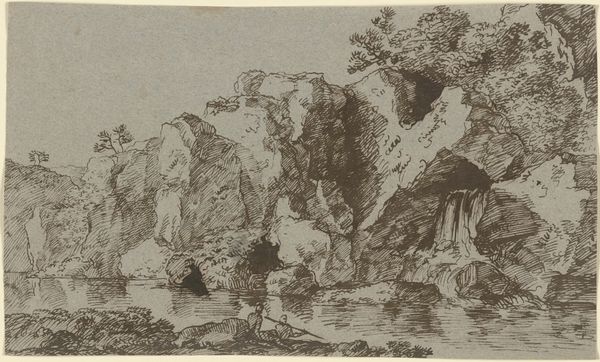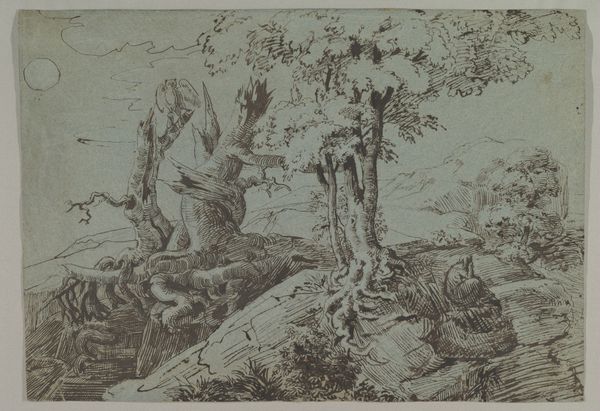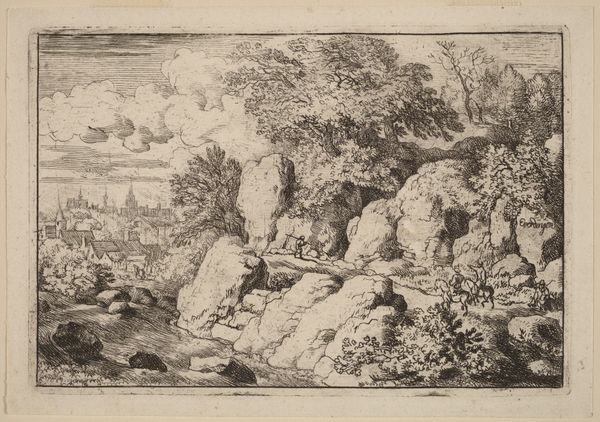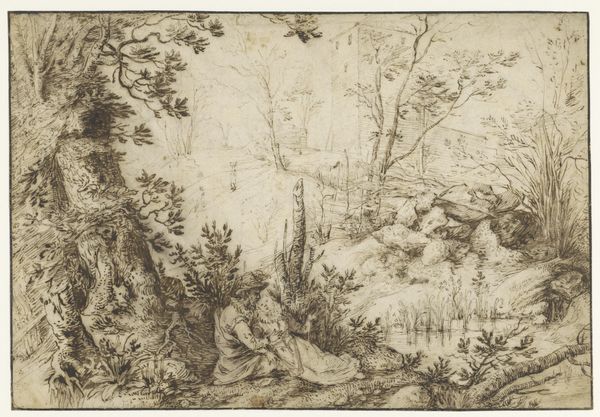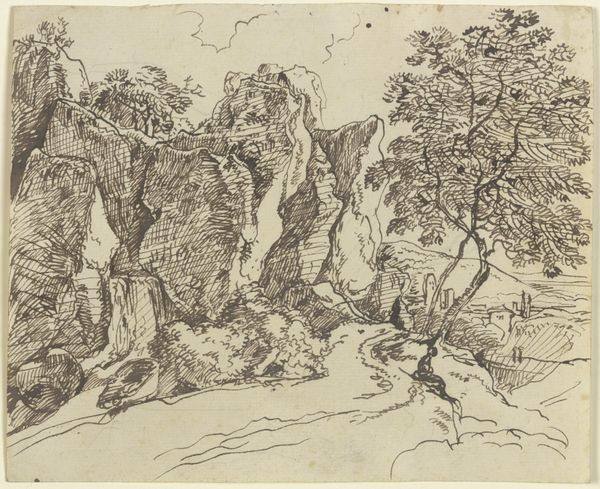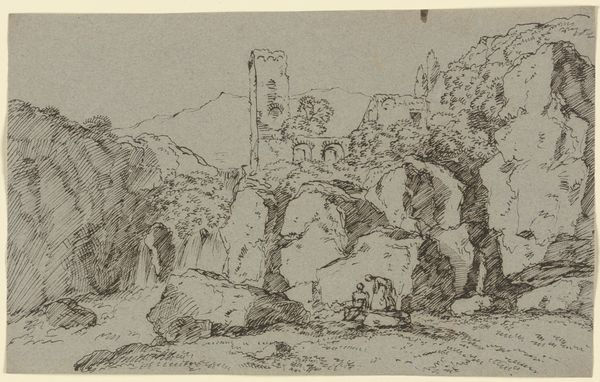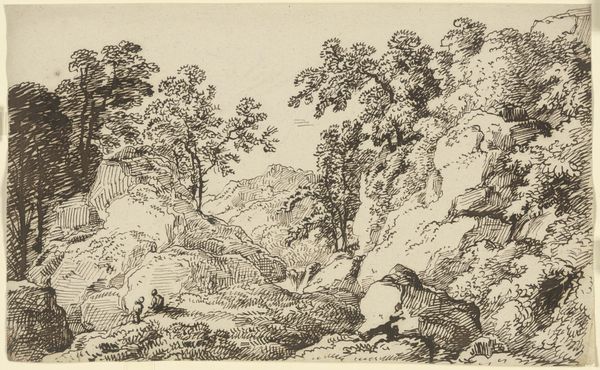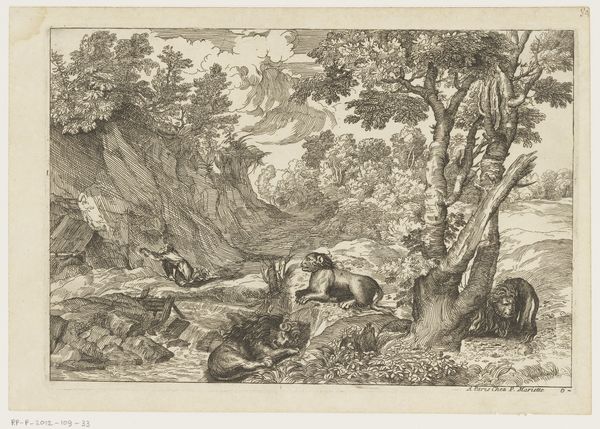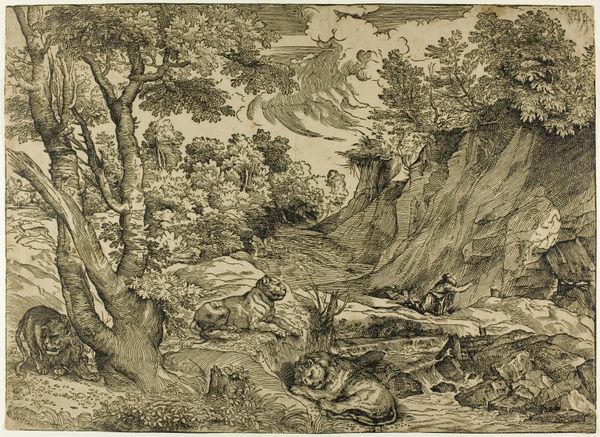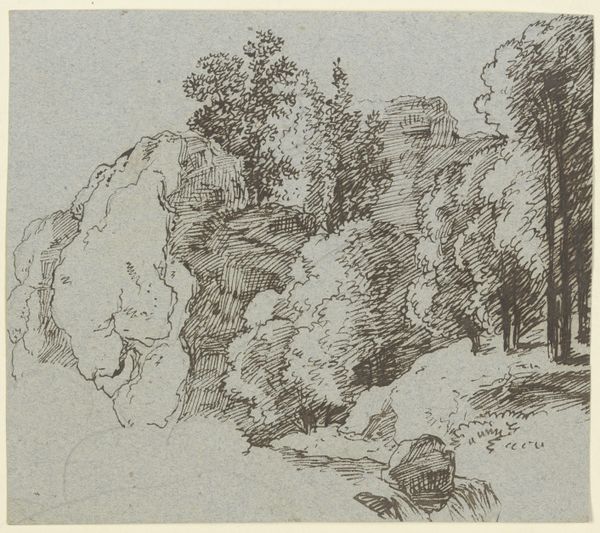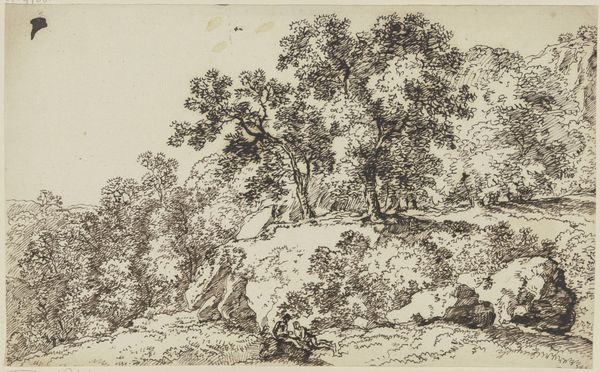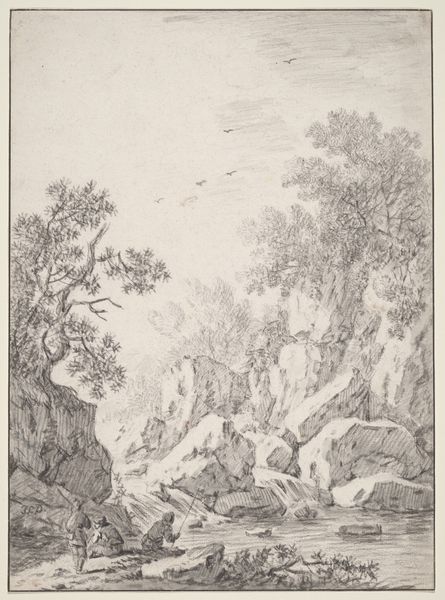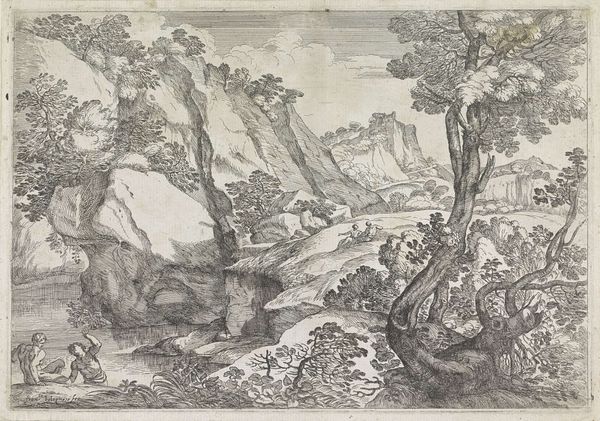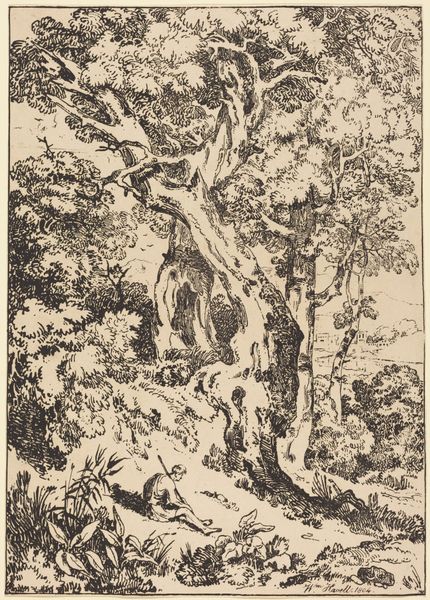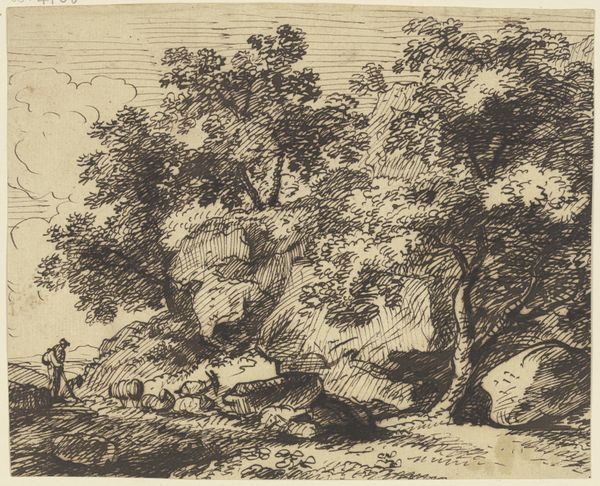
drawing, ink, indian-ink, pen
#
landscape illustration sketch
#
drawing
#
ink drawing
#
pen drawing
#
pen sketch
#
pencil sketch
#
landscape
#
german-expressionism
#
ink
#
german
#
ink drawing experimentation
#
indian-ink
#
pen-ink sketch
#
15_18th-century
#
pen work
#
sketchbook drawing
#
pen
#
sketchbook art
Copyright: Public Domain
Editor: Here we have Franz Kobell’s pen and ink drawing, “An einer Felsformation weidende Schafe,” housed at the Städel Museum. There's something quite stark and almost desolate about this landscape; it's not conventionally pretty. How do you interpret this work, especially considering the social context of landscape art? Curator: It's fascinating how Kobell uses the landscape, traditionally a space of leisure for the privileged, to maybe subtly question the romanticization of nature. Think about the period - the late 18th century. What did landscape typically represent for the dominant classes? This seemingly simple drawing, with its emphasis on raw nature and the vulnerable sheep, can be viewed as a quiet commentary on human’s relationship to the environment. Editor: That’s interesting. So, by depicting a somewhat harsh, less idyllic scene, could Kobell be pushing back against the idealised versions often commissioned by the wealthy? Was he perhaps subtly drawing attention to the realities of rural life, the labour, and maybe even the precarity of existence? Curator: Exactly! And who are these sheep owned by, really? They’re on "common land." Consider also that ink as a medium has certain socio-economic and political connotations as it evokes calligraphy and thus, administrative structures and government regulations around the rights to graze on what’s "commons." Landscape wasn't just about aesthetics; it was deeply intertwined with power and property. Can you imagine a contemporary parallel? Editor: I guess today we see similar conversations in art that addresses environmental degradation or displacement due to climate change... artists using the landscape to talk about broader injustices. This reading opens up a lot of new ways of seeing this seemingly simple drawing! Curator: Precisely! By analyzing art through the lens of its socio-political context, we start unpacking these layers. This piece reminds us to critically examine the narratives embedded within even the most pastoral of scenes.
Comments
No comments
Be the first to comment and join the conversation on the ultimate creative platform.
